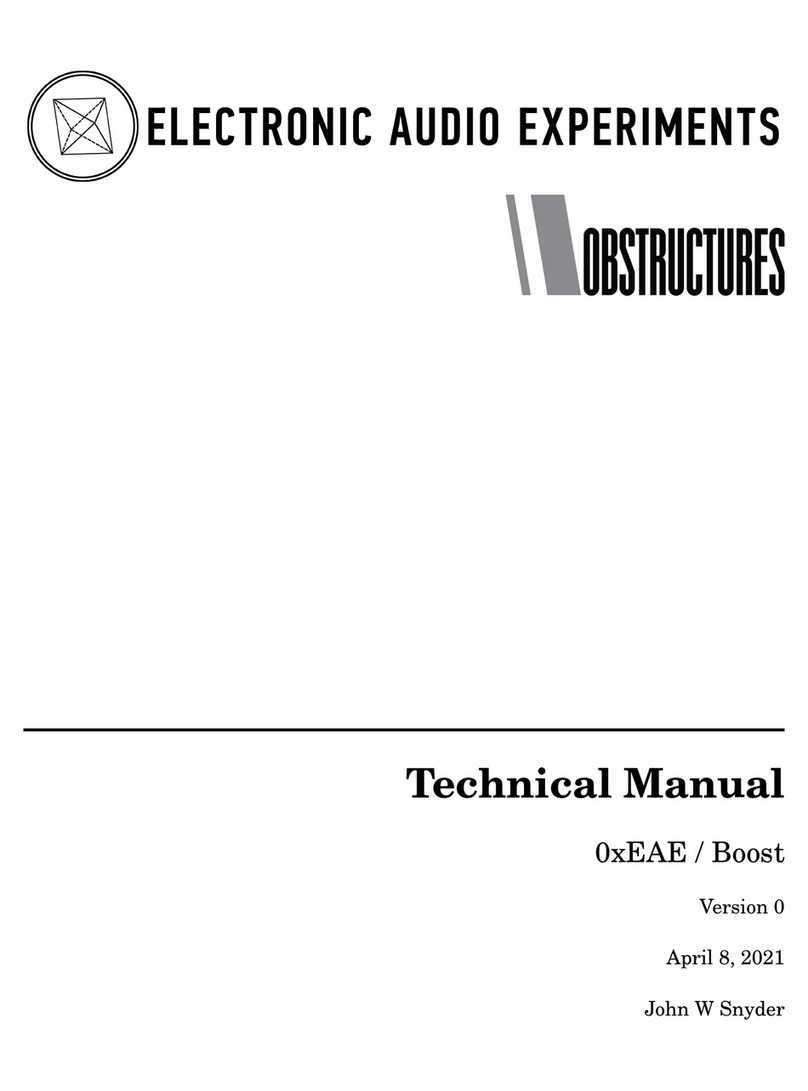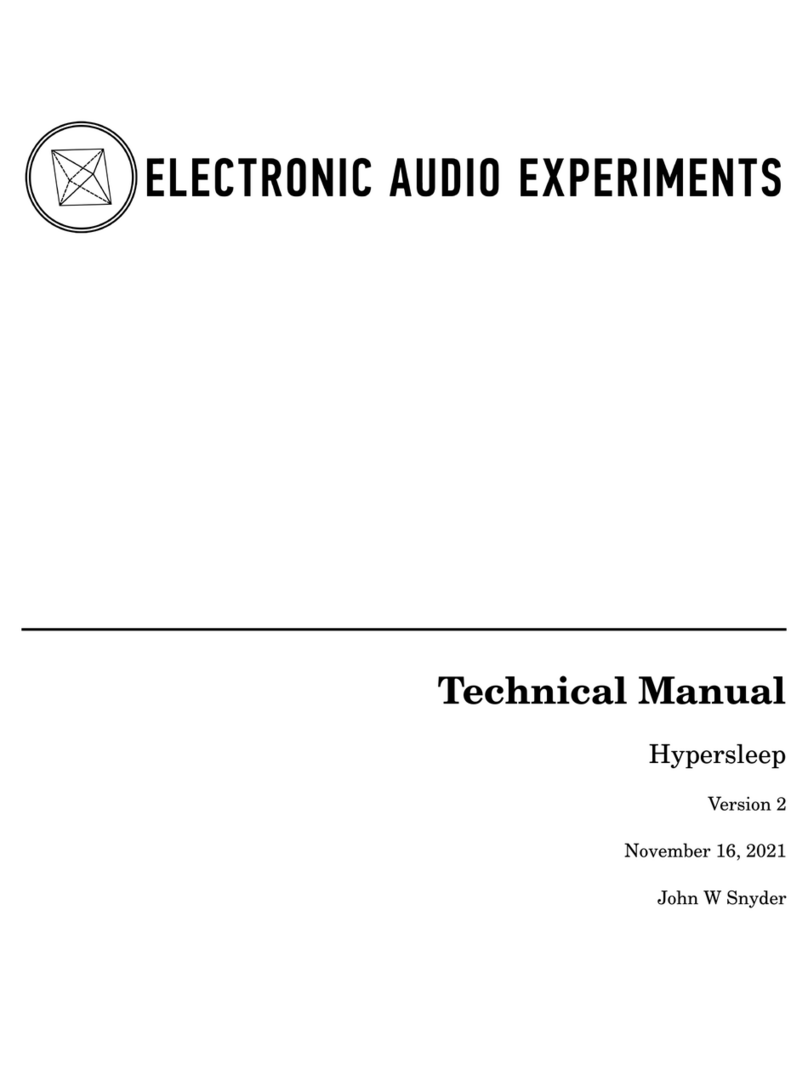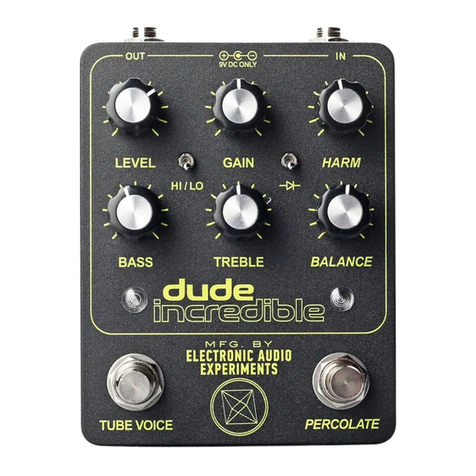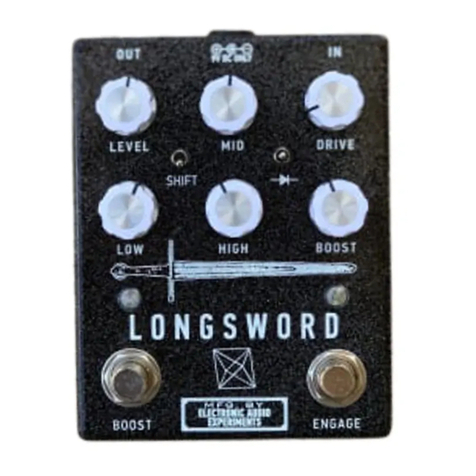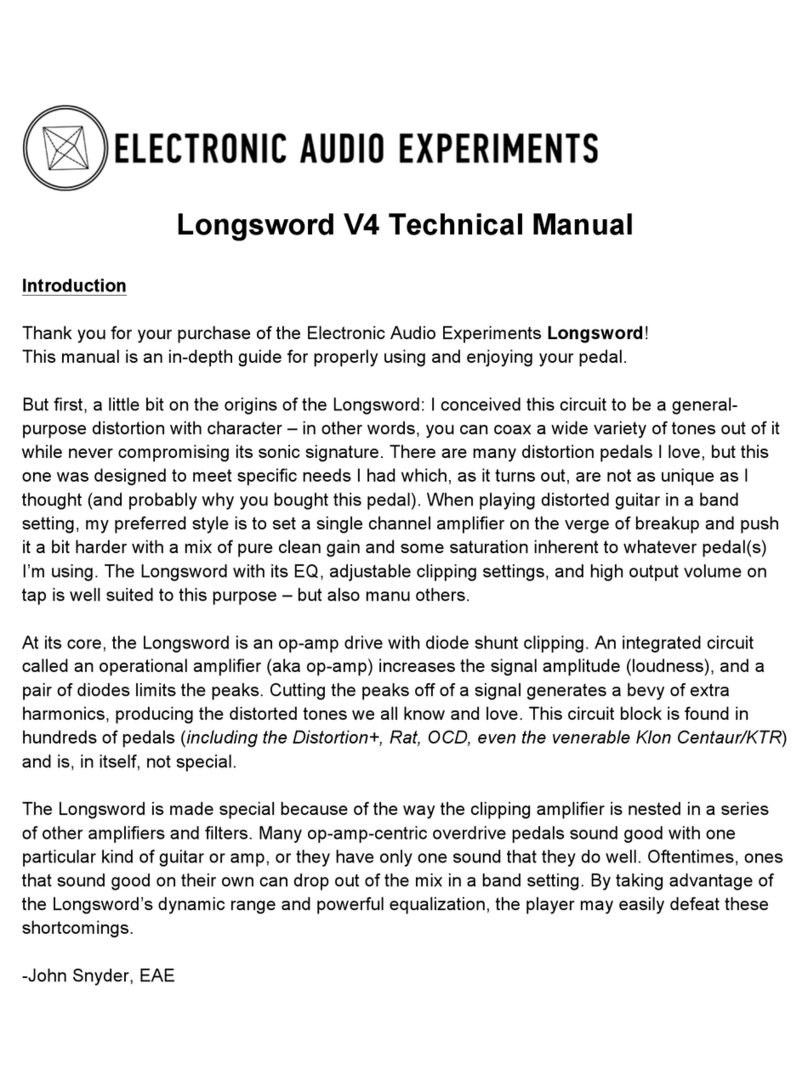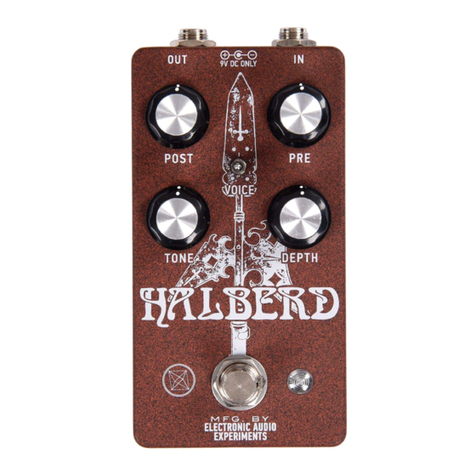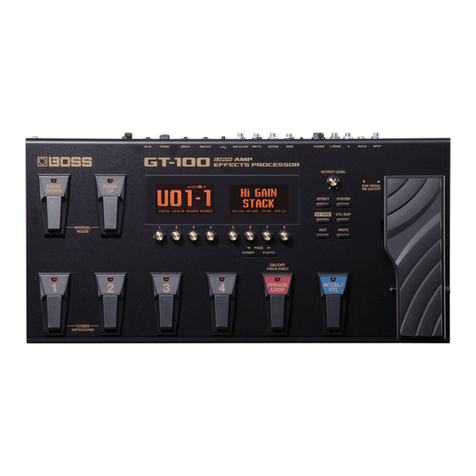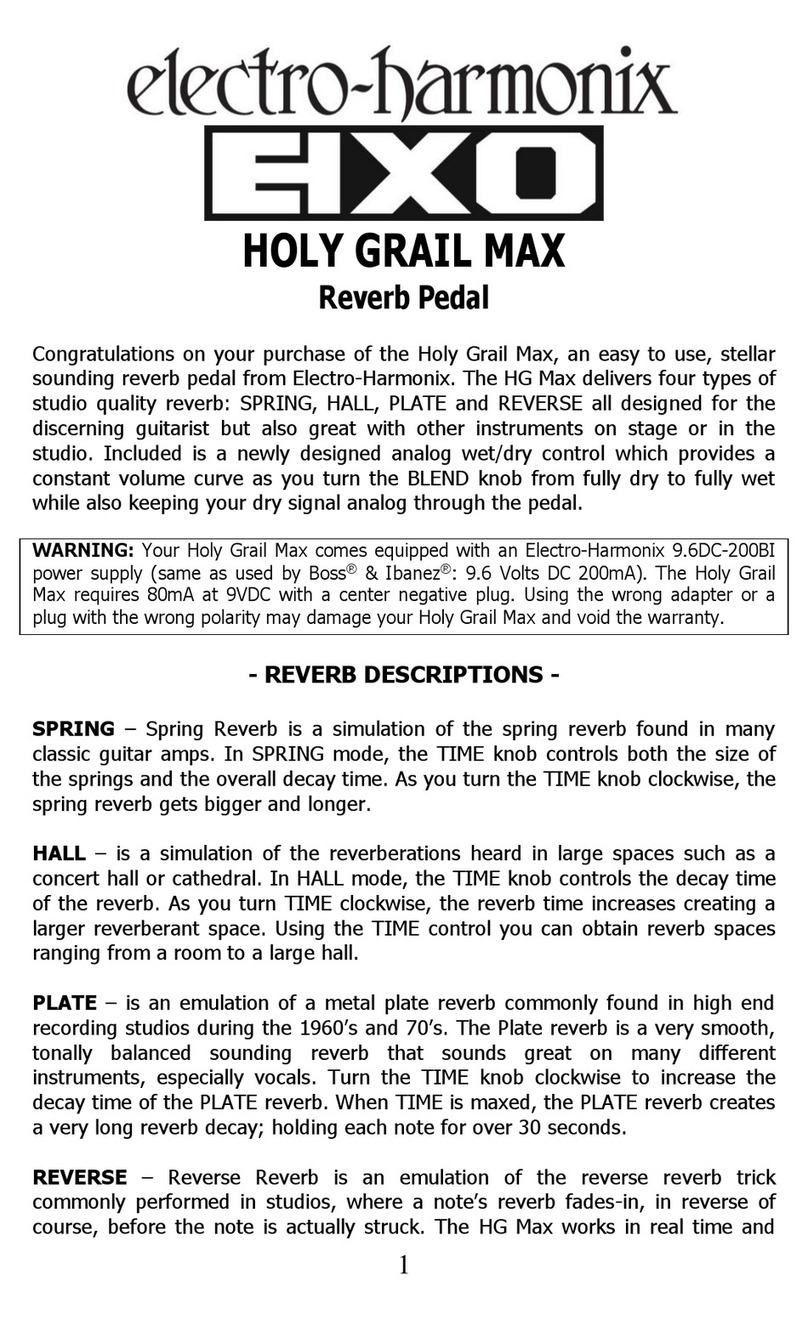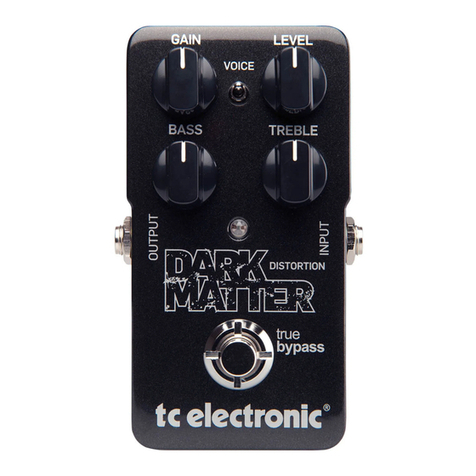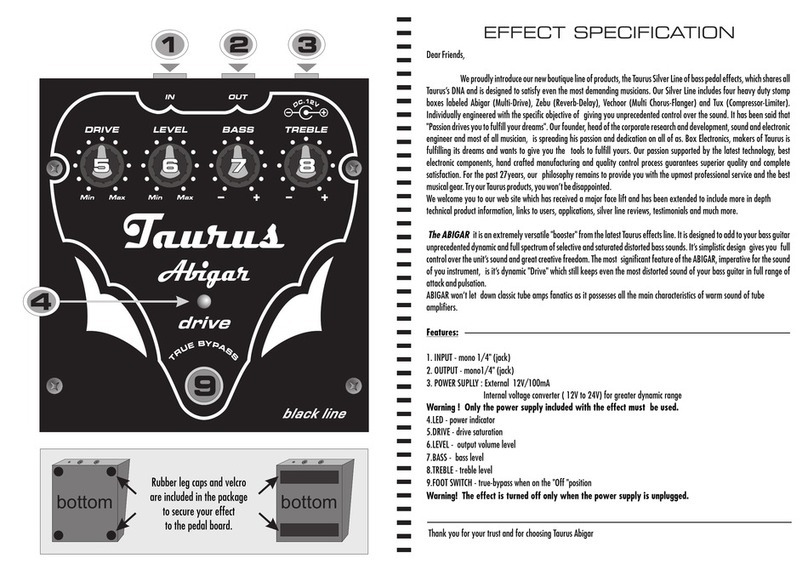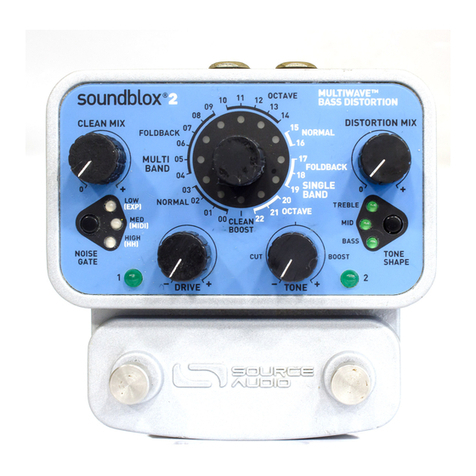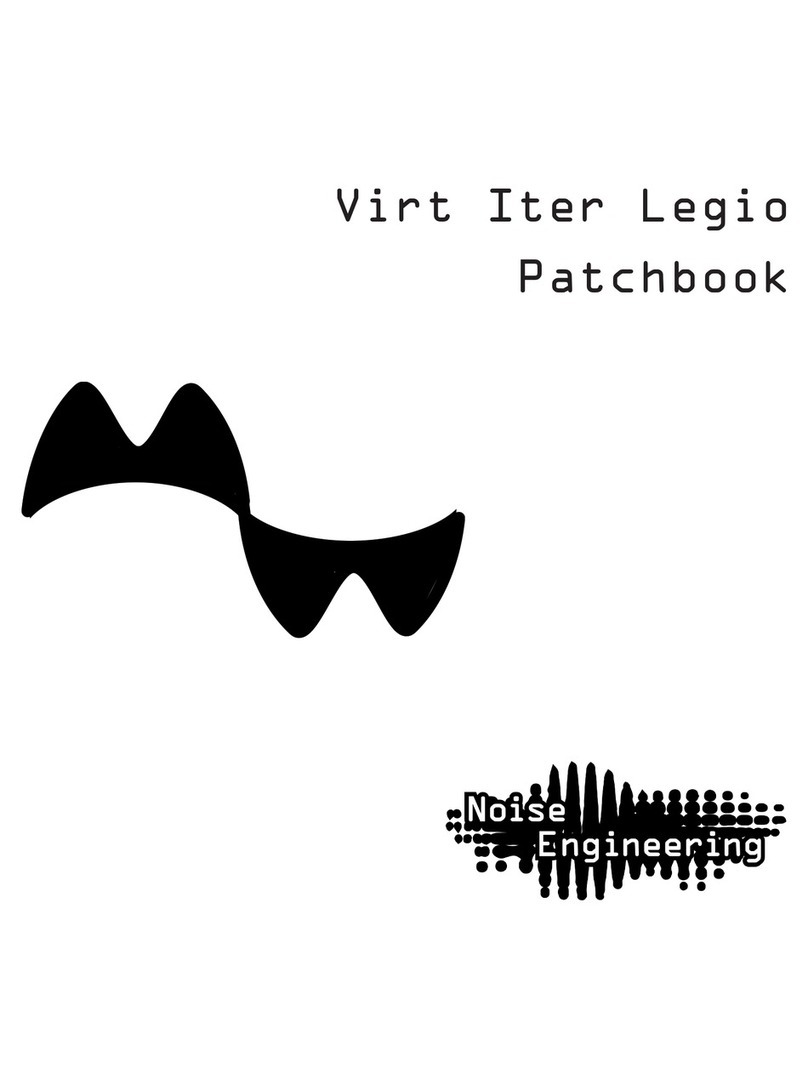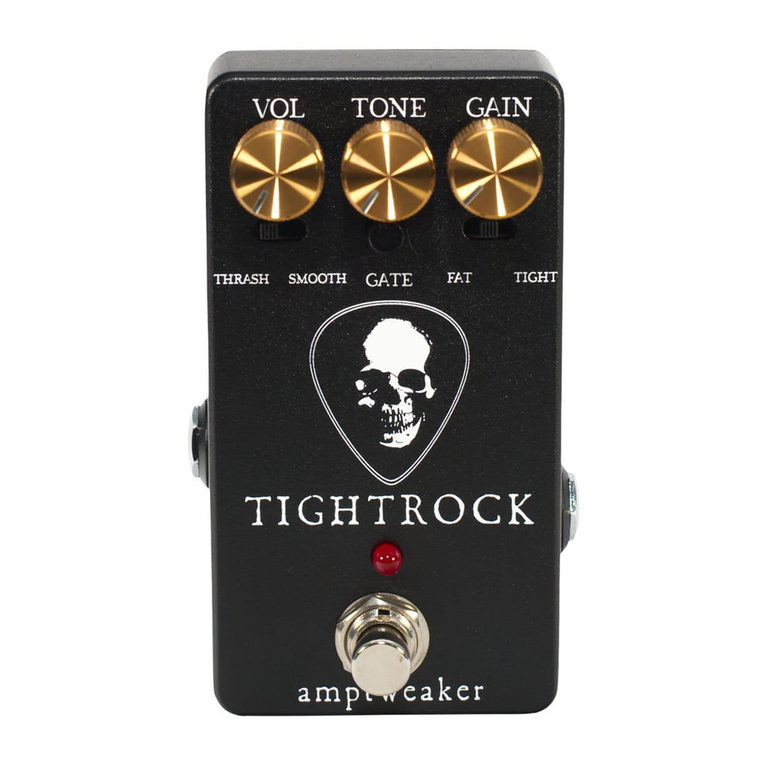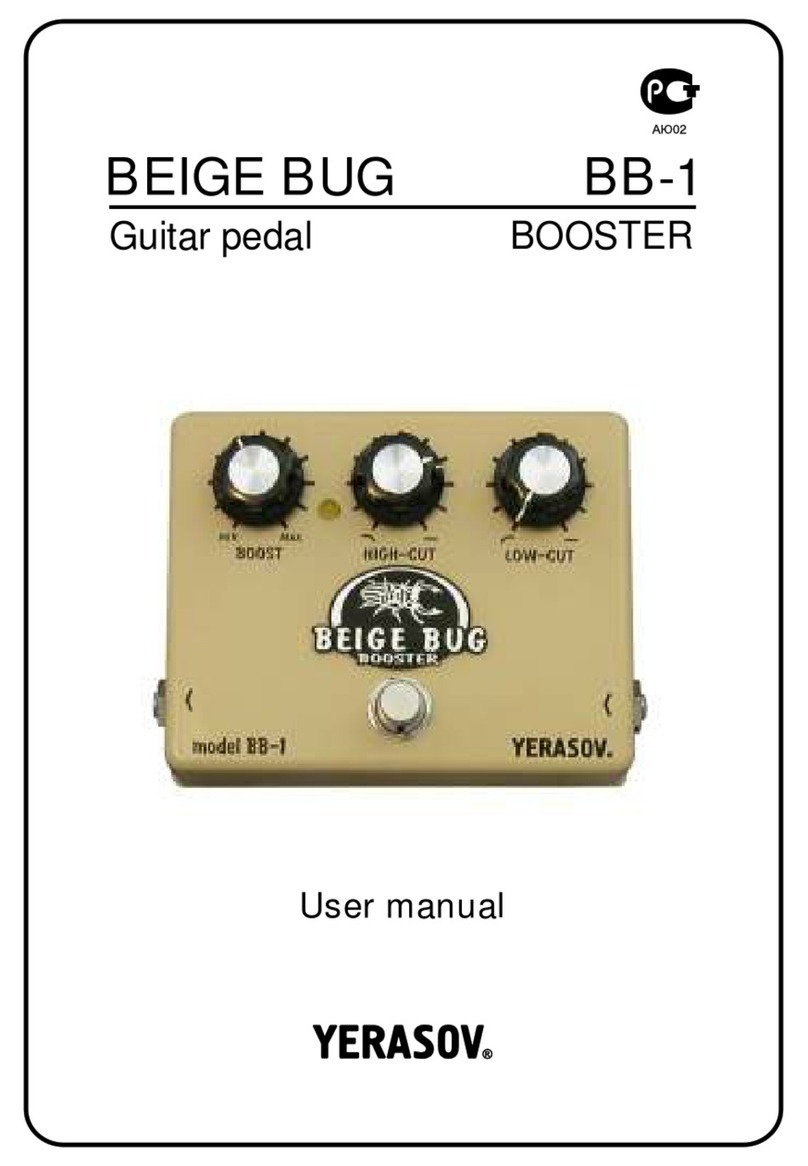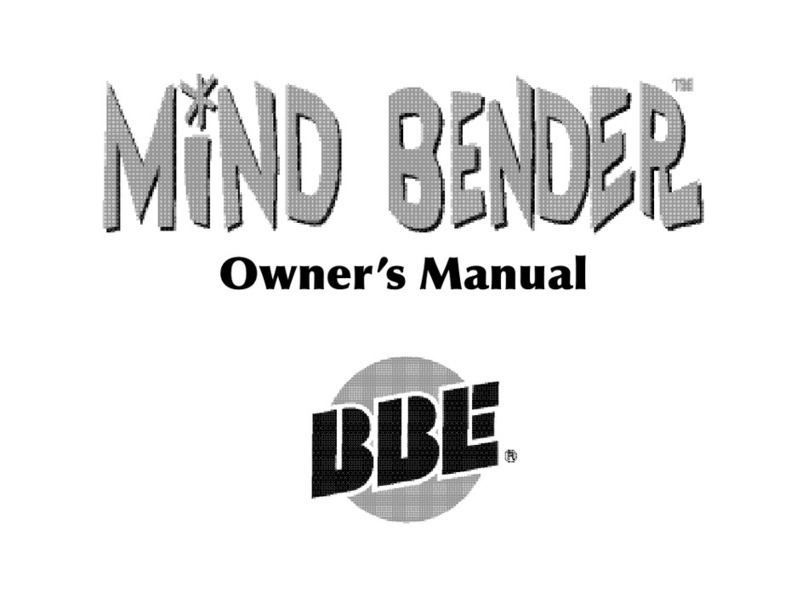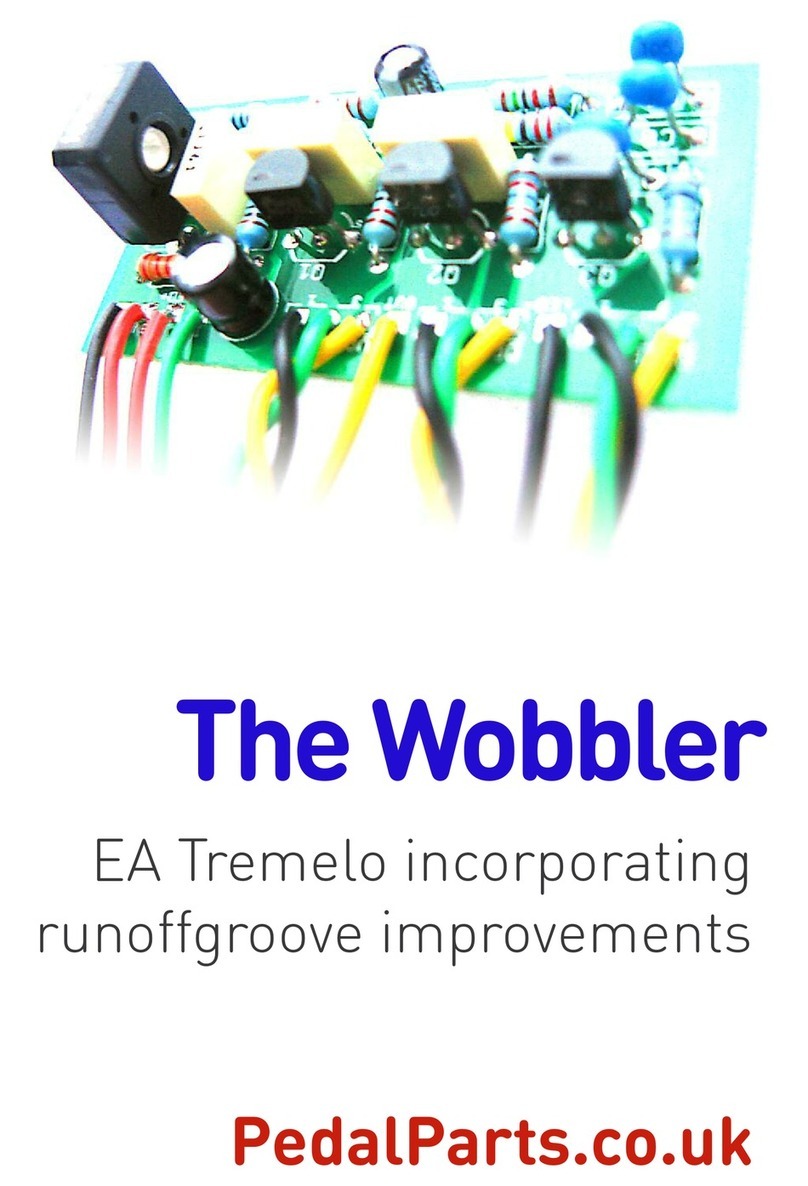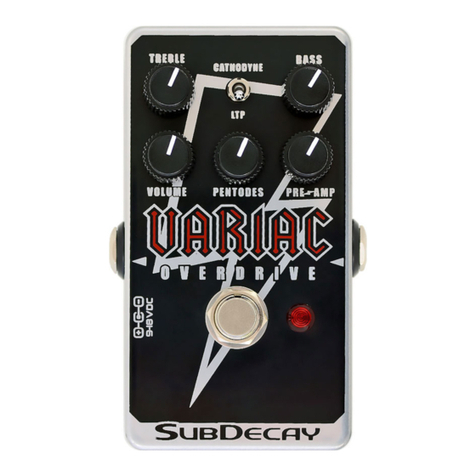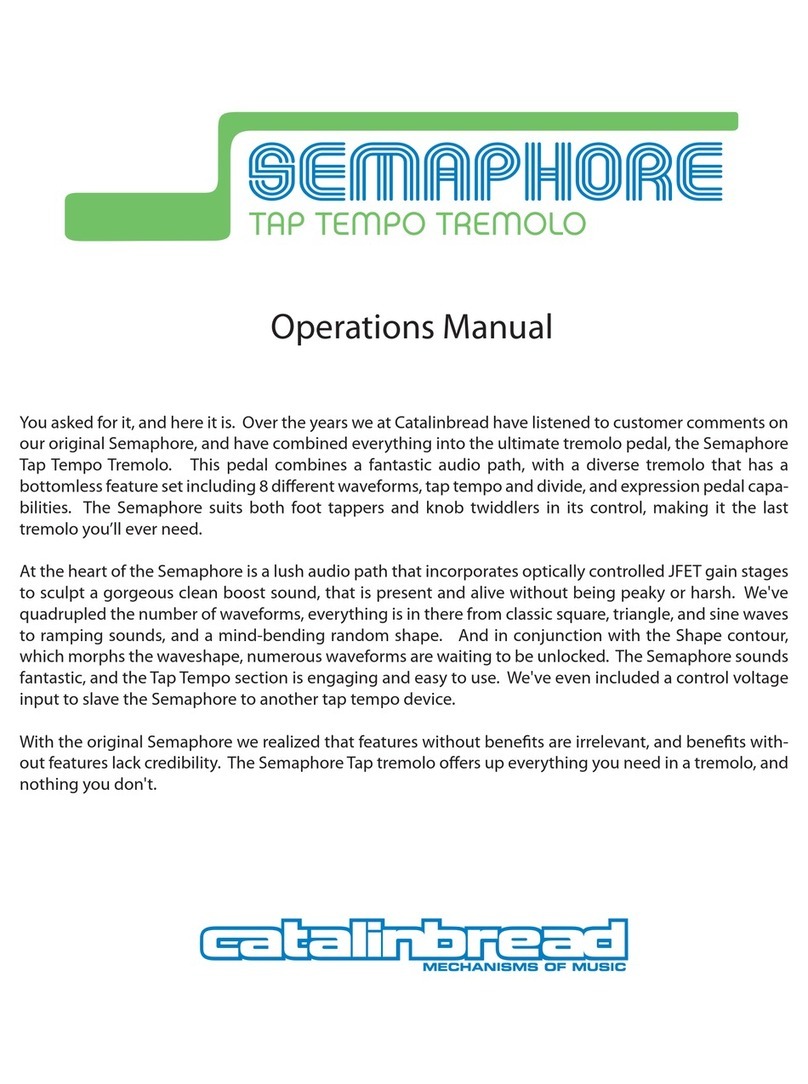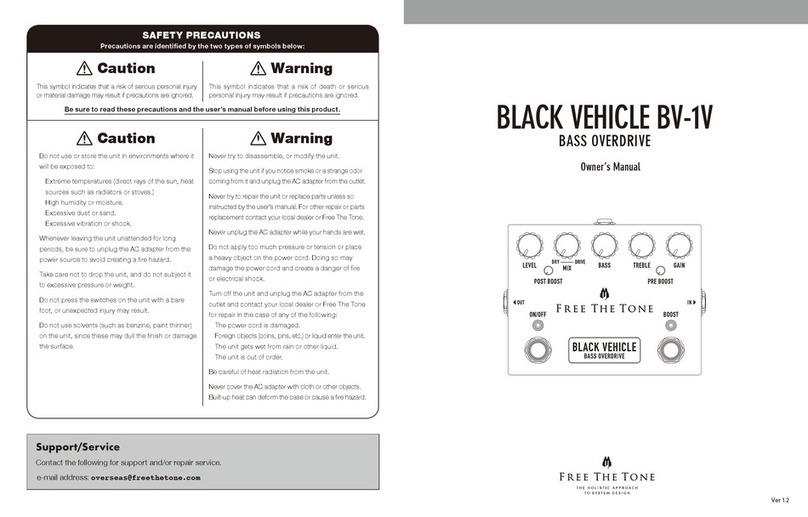Operation
Only use a standard reliable 9-volt center-negative DC power supply with this pedal! (e.g.
OneSpot,
Voodoo
Labs,
Pedaltrain,
Strymon,
etc.)
The Dude Incredible is daisy-chain friendly,
but it does not operate on batteries. Current draw is approximately 30mA. Reverse polarity, AC
voltage, or voltages above 9V may damage the pedal and doing so violates the warranty.
When dialing in the Dude Incredible for the first time, it is best to consider the Percolator and
IVP circuits separately. These circuits may be used individually or together, with a fixed order
(Percolator first). We describe them both below.
Part I: Harmonic Percolator
To activate the harmonic percolator, use the right footswitch. The controls labeled in italics
control this part of the circuit and are as follows:
●Harmonics
- controls the gain at the input. Lower settings produce a slightly fuzzy and
dynamic overdrive, higher settings become increasingly fuzzy with blocking distortion
and a “bloom” effect at maximum settings. Strongly interactive with the guitar’s volume
knob if there are no buffered pedals in between.
●Balance
- output level of the HP side. Can get pretty loud!
The HP is configured to boost the input of the IVP and is first in the signal chain. It has a very
low input impedance and will react differently when used first in your signal chain versus after a
tuner or other buffered pedal. A buffered pedal in front can sound excellent.
Note: the internal Bias
control sets the voltage on the germanium transistor. It is calibrated in
our shop, but you’re free to adjust by ear. There are no “forbidden” settings, just an optimal
range. Mark the original position before making adjustments.
Part II: IVP
In the IVP, the EQ is placed before the drive circuit, allowing for unique tone shaping. Rather
than boosting and cutting frequencies in the overall tone, the user can choose which
frequencies become distorted. Boosting highs brings forth not just treble content, but midrange
and presence as well. Boosting the lows can add heft at lower settings or overwhelm the drive
circuit in a musical fashion. The Tube Voice circuit uses discrete transistors and a small
transformer to generate clipping, which responds in a very smooth manner at lower gain
settings but becomes fuzzy and aggressive at higher settings. The controls are as follows:
●Gain
: sets the signal level going into the drive circuit
●Treble
: boosts mid and high frequencies. Very useful for adding crunch, presence, and
clangy harmonics. Even at higher settings, the harshness is tamed by the transformer
which has a natural high frequency rolloff at around 2-3KHz.
